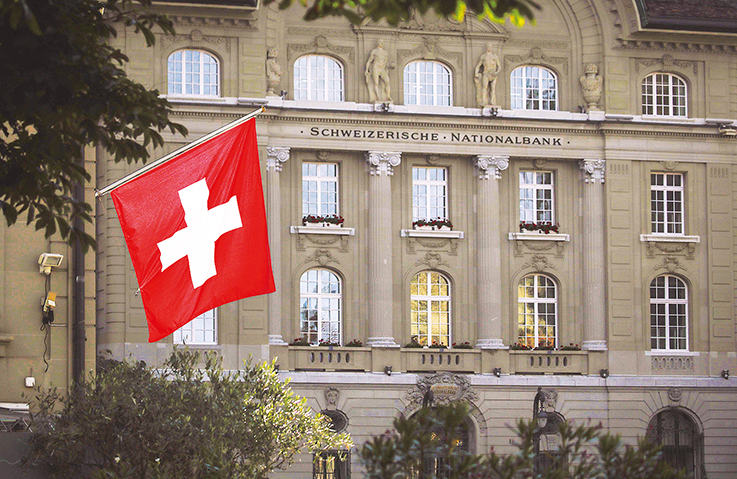Swiss central bank lowers rates and flags further cuts as inflation eases
The Swiss National Bank reduced interest rates by 25 basis points, echoing steps to lower borrowing costs by the European Central Bank and US Federal Reserve, and left the door wide open for more rate cuts as inflation cools sharply.
The SNB cut its policy rate to 1 per cent, the lowest level since early 2023. The cut was its third such reduction this year.
The decision, the last in the 12-year tenure of SNB chairman Thomas Jordan, was enabled by the taming of inflation in Switzerland – which slowed to 1.1 per cent in August and has been within the central bank’s 0 to 2 per cent target range for the last 15 months.
The SNB is ready to cut interest rates again, Jordan said after the decision, noting that inflationary pressure in Switzerland had decreased significantly.
“Further cuts in the SNB policy rate may become necessary in the coming quarters to ensure price stability over the medium term,” he said in prepared remarks for a press conference after what was his 42nd monetary policy meeting.
The central bank slashed its inflation forecasts for 2025 and 2026 on Thursday and predicted consumer price growth of 0.6 per cent in the second quarter of 2027.
Several analysts said they now expected the SNB to cut rates again in December, but Jordan was non-committal about that prospect when asked about it at the press conference.
“It is not pre-conditioned guidance,” he said.
The Swiss franc has appreciated in recent weeks, hitting its highest level in nine years against the euro in early August, adding to difficulties facing Switzerland’s exporters. It strengthened after the 25-basis-point cut was announced.
The cut follows similar monetary policy easing by the ECB and the Fed earlier this month.
Charlotte Montpellier, senior economist at ING, said the SNB’s 25 point reduction was “the most dovish you could ask for.”
“Not only is the SNB making it very clear that further rate cuts may be necessary, but it has also revised its inflation forecasts very sharply downwards, and much more sharply than expected,” she said.
Karsten Junius, chief economist at J Safra Sarasin, saw the bank’s outlook as more dovish than markets expected.
“This is the strongest hint towards future policy decisions that the SNB has given in the past years and a break from previous communication patterns,” he said.
The SNB trimmed its 2024 inflation forecast to 1.2 per cent from its 1.3 per cent prediction in June. It also cut its forecasts for 2025 to 0.6 per cent from 1.1 per cent previously and for 2026 to 0.7 per cent from 1 per cent.
“With inflation now expected to average 0.6 per cent in 2025 and 0.7 per cent in 2027, the SNB seems to want to send a very clear signal to the markets that further rate cuts are on the way, in order to weaken the Swiss franc,” said Montpellier at ING.
SNB chief Jordan recently highlighted the success the Swiss central bank has had in fighting inflation, which enabled it to become the frontrunner among central banks in lowering borrowing costs, cutting rates in both March and June.
He also acknowledged the problems that the recent rise in the franc has created for exporters, reinforcing hopes that lower interest rates – which could weaken the safe haven currency – could be on the way.





